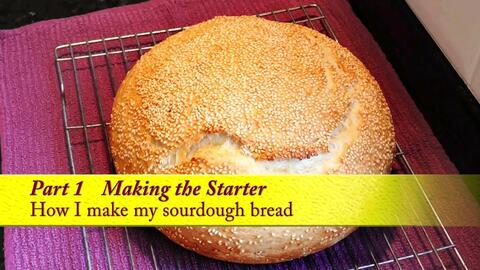"Ultimate Guide to Sourdough Wheat Bread Recipes: Tips, Techniques, and Variations for Perfect Loaves"
#### Sourdough Wheat Bread RecipesSourdough wheat bread recipes are a delightful way to explore the world of artisanal bread-making. Sourdough, known for it……
#### Sourdough Wheat Bread Recipes
Sourdough wheat bread recipes are a delightful way to explore the world of artisanal bread-making. Sourdough, known for its unique tangy flavor and chewy texture, is created through a natural fermentation process that involves wild yeast and lactic acid bacteria. This method not only enhances the taste but also improves the bread's nutritional profile, making it a healthier choice compared to conventional bread.
#### The Basics of Sourdough
To begin your journey into sourdough wheat bread recipes, it’s essential to understand the basics of sourdough bread-making. The foundation of any sourdough recipe is the sourdough starter. This living culture is a mixture of flour and water that has been fermented over time. Creating your own starter can take about 5 to 7 days, during which you’ll feed it regularly to cultivate the wild yeast and bacteria.
Once your starter is active and bubbly, you can begin experimenting with various sourdough wheat bread recipes. The primary ingredients typically include whole wheat flour, water, salt, and your active sourdough starter. Whole wheat flour adds a robust flavor and is richer in nutrients compared to all-purpose flour, making it a great choice for sourdough.
#### Step-by-Step Guide to Making Sourdough Wheat Bread

1. **Feeding the Starter**: Ensure your sourdough starter is active by feeding it a few hours before you plan to bake. It should double in size and be bubbly.
2. **Mixing the Dough**: In a large bowl, combine the whole wheat flour and water. Mix until there are no dry bits of flour. Let this mixture rest for about 30 minutes (this is called autolyse). After the rest, add the active starter and salt, mixing until fully incorporated.
3. **Kneading**: Knead the dough for about 10-15 minutes until it becomes smooth and elastic. You can also use the stretch and fold method, which involves stretching the dough and folding it over itself at intervals during the bulk fermentation.
4. **Bulk Fermentation**: Place the dough in a lightly oiled bowl, cover it with a damp cloth, and let it rise at room temperature for 4-6 hours, or until it has doubled in size.
5. **Shaping**: After bulk fermentation, turn the dough out onto a lightly floured surface. Gently shape it into a round or oval loaf, depending on your preference.

6. **Second Rise**: Place the shaped dough into a proofing basket or bowl lined with a floured cloth. Cover and let it rise for another 1-2 hours.
7. **Preheat the Oven**: About 30 minutes before baking, preheat your oven to 450°F (230°C) and place a Dutch oven inside to heat up.
8. **Scoring and Baking**: Carefully transfer the dough into the hot Dutch oven. Score the top with a sharp knife to allow for expansion. Cover and bake for 30 minutes, then remove the lid and bake for an additional 15-20 minutes until the crust is golden brown.
9. **Cooling**: Once baked, transfer the bread to a wire rack and let it cool completely before slicing. This step is crucial as it allows the interior to set properly.
#### Variations and Tips

Experimenting with different sourdough wheat bread recipes can yield a variety of flavors and textures. Consider adding ingredients like seeds, nuts, or herbs for added flavor. You can also try using different types of flour, such as spelt or rye, to create unique variations.
For those who may find the process daunting, remember that practice makes perfect. Each loaf you bake will teach you something new about the fermentation process and how to achieve the desired crust and crumb.
In conclusion, sourdough wheat bread recipes are not just about following a set of instructions; they are an invitation to explore the art of bread-making. With patience and practice, you can create delicious, homemade sourdough bread that is sure to impress your family and friends. Happy baking!